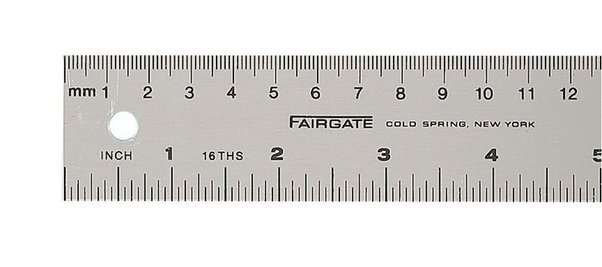There are 10 millimeters (mm) in one centimeter (cm). This relationship is based on the metric system, where centimeters and millimeters are units of length. The prefix “centi-” in centimeter denotes a factor of 1/100, and “milli-” in millimeter denotes a factor of 1/1000. Therefore, converting from centimeters to millimeters involves multiplying the number of centimeters by 10. For example, 3 centimeters is equal to 30 millimeters (3 cm * 10 mm/cm = 30 mm). This conversion is commonly used in fields such as science, engineering, and everyday measurements where precise units of length are necessary. Understanding this relationship helps ensure accurate measurement and conversion between centimeters and millimeters in various applications.

Understanding Metric Conversion
Metric conversion involves converting between different units of measurement within the metric system, which is based on powers of ten. Here are key aspects to understanding metric conversion:
- Base Units: The metric system uses meters (m) as the base unit for length, grams (g) for mass, and liters (L) for volume. Other units are derived from these base units using prefixes that denote powers of ten.
- Prefixes: Prefixes such as kilo- (k), centi- (c), and milli- (m) indicate multiplication or division by powers of ten:
- Kilo- (k): 1 kilometer (km) = 1000 meters (m)
- Centi- (c): 1 centimeter (cm) = 0.01 meters (m)
- Milli- (m): 1 millimeter (mm) = 0.001 meters (m)
3. Conversion Factors: To convert from one metric unit to another, multiply or divide by the appropriate conversion factor based on the prefix used:
- Example: To convert 2 kilometers to meters, multiply by 1000 (2 km * 1000 m/km = 2000 m).
4. Consistency: The metric system ensures consistency across measurements, making it easier to understand and apply in scientific, industrial, and everyday contexts globally.
5. Applications: Metric conversion is used in various fields such as engineering, medicine, and international trade for accurate measurement and standardization.
The Relationship Between Centimeters and Millimeters
- Basic Conversion: One centimeter (cm) is equivalent to ten millimeters (mm). This is the foundational relationship between these two units in the metric system.
- Metric System Scale: Both centimeters and millimeters are derived from the meter, which is the base unit of length in the metric system. The prefix “centi-” indicates a hundredth, and “milli-” denotes a thousandth, so there are 100 centimeters or 1,000 millimeters in a meter.
- Precision in Measurement: Millimeters provide a finer measurement than centimeters, making them ideal for small, precise measurements. In contrast, centimeters are better for slightly larger scales where millimeter precision is not necessary.
- Conversion Ease: Converting between centimeters and millimeters is straightforward, simply involving multiplication or division by 10. This ease of conversion aids in tasks requiring precise measurement and calculations.
- Common Uses: In everyday use, centimeters are commonly used for measuring personal heights, lengths of objects, and dimensions for craft or construction projects, while millimeters are often used where fine precision is needed, such as in engineering and technical drawings.
How many mm in 1 cm
- Unit Relationship: 1 centimeter is equal to 10 millimeters.
- Metric Units: Both centimeters and millimeters are metric units of length.
- Conversion Factor: The conversion factor is 10.
- Simple Multiplication: Multiply the number of centimeters by 10 to convert to millimeters.
- Precision: Millimeters provide higher precision for smaller measurements.
- Base Unit: The base unit for both is the meter, with millimeters being 1/1000 of a meter and centimeters 1/100.
- Usage: Millimeters are typically used in fields requiring high precision, such as engineering and manufacturing.
- Visual Scale: Centimeters are often used for more practical everyday measurements.
- Standardization: This conversion standard is used globally in scientific and technical fields.
- Educational Relevance: Understanding this conversion is foundational in math and science education, emphasizing the decimal structure of the metric system.
Conclusion
Understanding the conversion between centimeters and millimeters is fundamental in the metric system, providing a simple yet critical link between different scales of measurement. The 10:1 ratio between centimeters and millimeters facilitates easy and quick calculations, enhancing accuracy in scientific, educational, engineering, and daily life contexts. Mastery of this conversion is essential not only for precise measurement tasks but also for reinforcing the systematic and decimal-based nature of the metric system, ensuring consistent application across various fields and regions. This foundational knowledge supports effective communication and operational efficiency, particularly in global interactions where standardized measurements are crucial.
FAQs
Q: 1What is the basic conversion from centimeters to millimeters?
Ans: The basic conversion is straightforward: 1 centimeter (cm) equals 10 millimeters (mm).
Q:2. Why is this conversion useful?
Ans: This conversion is useful for precise measurements in various fields such as engineering, construction, and science, where small lengths need to be accurately measured or calculated.
Q:3 How do I convert centimeters to millimeters?
Ans : To convert centimeters to millimeters, multiply the number of centimeters by 10. For example, to find out how many millimeters are in 5 centimeters, multiply 5 by 10 to get 50 millimeters.
Q:4.Are centimeters and millimeters both metric units?
Ans: Yes, both centimeters and millimeters are units within the metric system, with the meter being the base unit of length. Centimeters and millimeters are smaller fractions of a meter, used for detailed measurements.






